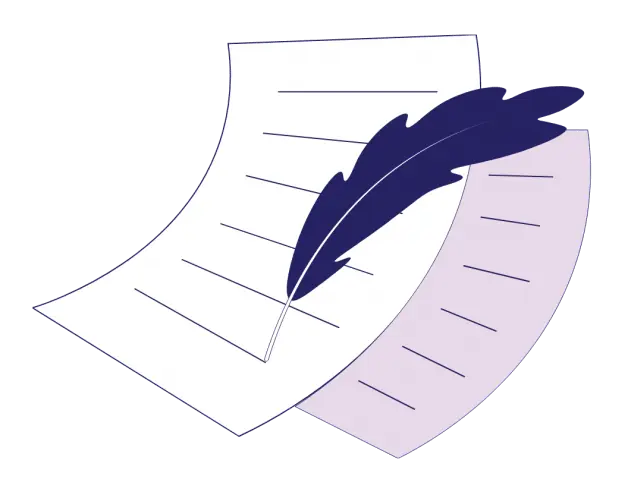
-
3-minute read
-
21st December 2022
Literary Devices: Anapest vs. Dactyl
Anapests and dactyls are literary devices commonly used in poetry, limericks, and songs. In this post, you’ll learn what they are and why you might want to use them in your own writing. We’ll also look at some examples of each.
Stressed vs. Unstressed Syllables
To understand what anapests and dactyls are in poetry, you must first understand what stressed and unstressed syllables are. A stressed syllable is the sound that you emphasize, as seen in bold in these examples:
Unstressed syllables, therefore, are the sounds that aren’t emphasized. They are in bold in the following examples:
The pattern of stressed and unstressed syllables creates rhythm in poetry.
What Is an Anapest in Poetry?
An anapest is a metrical foot consisting of three syllables (also called an anapestic meter). The first two syllables are unstressed (uu), and the last syllable is stressed (/). So, we follow an unstressed/unstressed/stressed (uu/) pattern, like da-da-DAH-da-da-DAH. This pattern creates pleasing rhythms and is commonly seen in children’s books, limericks, and poetry.
Here are some examples of anapests in three-syllable words:
in-ter-RUPT
un-a-WARE
un-der-STAND
Here are some examples of anapests used in everyday phrases:
In the BLINK of an EYE
Hit the NAIL on the HEAD
At the DROP of a HAT
Costs an ARM and a LEG
A well-known example of anapests in poetry is in the famous poem by Clement Clarke Moore:
Not a CREA-ture was STIR-ring, not E-ven a MOUSE…
Another famous example of anapests is The Destruction of Sennacherib by Lord Byron. Here’s the first stanza from the poem:
And his CO-horts were GLEAM-ing in PURP-le and GOLD;
And the SHEEN of their SPEARS was like STARS on the SEA,
When the BLUE wave rolls NIGHT-ly on DEEP Ga-li-LEE…
Both of these examples are written in anapestic tetrameter (four anapestic meters in a line [uu/uu/uu/uu/]) to maintain a pleasing rhythm.
Find this useful?
Subscribe to our newsletter and get writing tips from our editors straight to your inbox.
Subscribe to Beyond the Margins and get your monthly fix of editorial strategy, workflow tips, and real-world examples from content leaders.
What Is a Dactyl in Poetry?
A dactyl is the opposite meter of an anapest. To create a dactylic meter, you still use three syllables, but the pattern is reversed: stressed/unstressed/unstressed (/uu). We follow a DAH-da-da-DAH-da-da rhythm. Dactylic meters are often used for serious or intense works, such as epic poems like the Iliad and the Odyssey.
Here are some dactyls in words with three syllables:
BAS-ket-ball
EL-e-phant
BI-cy-cle
Here’s an example of dactylic meters in the epic poem Evangeline: A Tale of Acadie by Henry Wadsworth Longfellow:
The MUR-mur-ing PINES and the HEM-locks,
BEARD-ed with MOSS, and in GAR-ments green,
in-dis-TINCT in the TWI-light…
Overall, this poem uses dactyls, with the exception of the endings, which use trochees (HEM-lock and TWI-light).
Another example of dactyls in poetry is The Lost Leader by Robert Browning:
JUST for a RIB-and to STICK in his COAT…
Again, except for the endings, these lines follow a dactylic meter.
Takeaway
Anapests and dactyls are literary devices you can use in your writing. Keep in mind that anapests create a lighthearted and upbeat rhythm while dactyls have a more somber and serious tone. To practice these devices, try some poetry writing exercises.
If you’re struggling with using literary devices in your writing, let us proofread your first 500 words for free!




